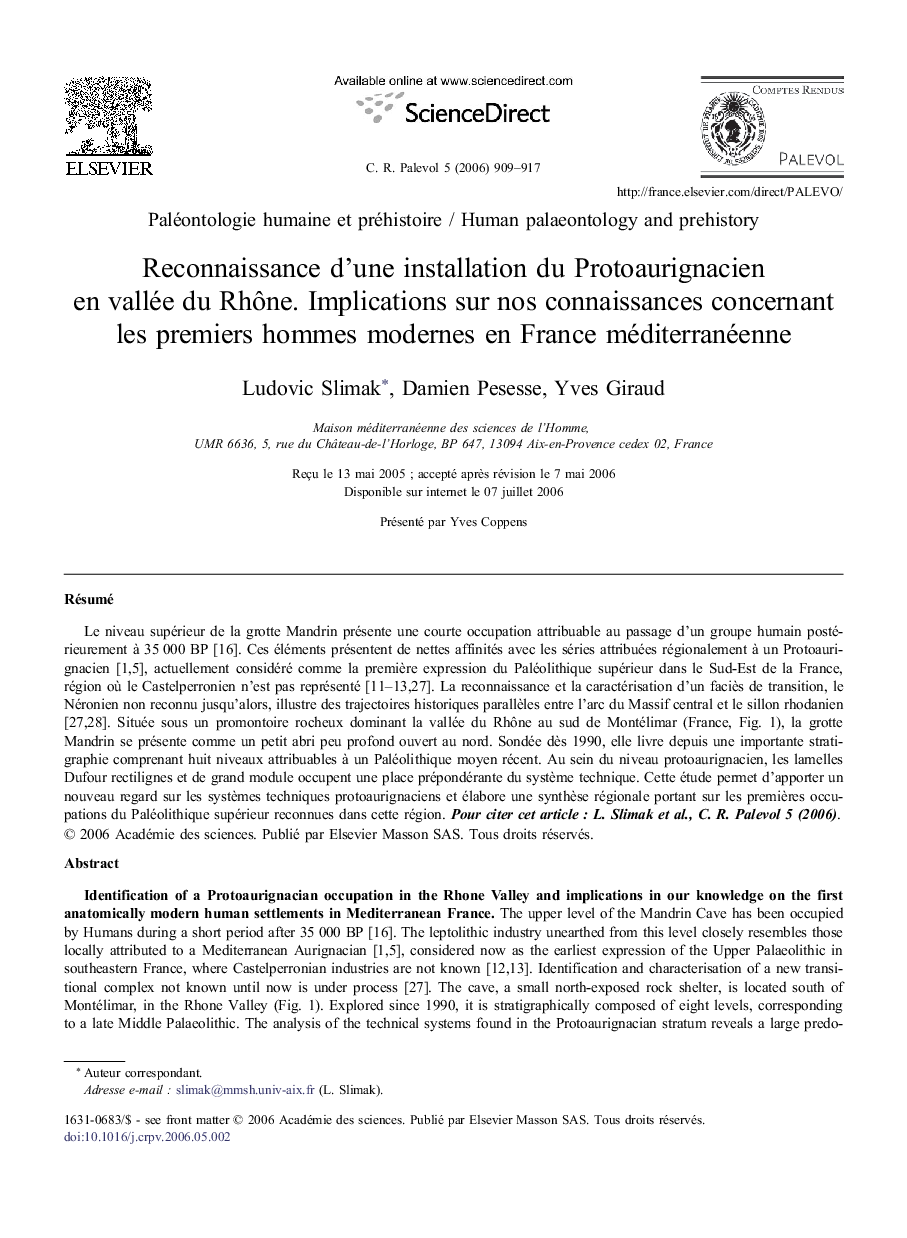| Article ID | Journal | Published Year | Pages | File Type |
|---|---|---|---|---|
| 4746615 | Comptes Rendus Palevol | 2006 | 9 Pages |
RésuméLe niveau supérieur de la grotte Mandrin présente une courte occupation attribuable au passage d'un groupe humain postérieurement à 35 000 BP [16]. Ces éléments présentent de nettes affinités avec les séries attribuées régionalement à un Protoaurignacien [1,5], actuellement considéré comme la première expression du Paléolithique supérieur dans le Sud-Est de la France, région où le Castelperronien n'est pas représenté [11–13,27]. La reconnaissance et la caractérisation d'un faciès de transition, le Néronien non reconnu jusqu'alors, illustre des trajectoires historiques parallèles entre l'arc du Massif central et le sillon rhodanien [27,28]. Située sous un promontoire rocheux dominant la vallée du Rhône au sud de Montélimar (France, Fig. 1), la grotte Mandrin se présente comme un petit abri peu profond ouvert au nord. Sondée dès 1990, elle livre depuis une importante stratigraphie comprenant huit niveaux attribuables à un Paléolithique moyen récent. Au sein du niveau protoaurignacien, les lamelles Dufour rectilignes et de grand module occupent une place prépondérante du système technique. Cette étude permet d'apporter un nouveau regard sur les systèmes techniques protoaurignaciens et élabore une synthèse régionale portant sur les premières occupations du Paléolithique supérieur reconnues dans cette région. Pour citer cet article : L. Slimak et al., C. R. Palevol 5 (2006).
Identification of a Protoaurignacian occupation in the Rhone Valley and implications in our knowledge on the first anatomically modern human settlements in Mediterranean France. The upper level of the Mandrin Cave has been occupied by Humans during a short period after 35 000 BP [16]. The leptolithic industry unearthed from this level closely resembles those locally attributed to a Mediterranean Aurignacian [1,5], considered now as the earliest expression of the Upper Palaeolithic in southeastern France, where Castelperronian industries are not known [12,13]. Identification and characterisation of a new transitional complex not known until now is under process [27]. The cave, a small north-exposed rock shelter, is located south of Montélimar, in the Rhone Valley (Fig. 1). Explored since 1990, it is stratigraphically composed of eight levels, corresponding to a late Middle Palaeolithic. The analysis of the technical systems found in the Protoaurignacian stratum reveals a large predominance of rectilinear Dufour's bladelets, longer than 5 cm. The present study casts a new look on the technical systems and proposes specific schemes for the production of bladelets, as well as, founded on the actual composition of the assemblages, a synthesis of the first human settlements in Mediterranean France. To cite this article: L. Slimak et al., C. R. Palevol 5 (2006).
